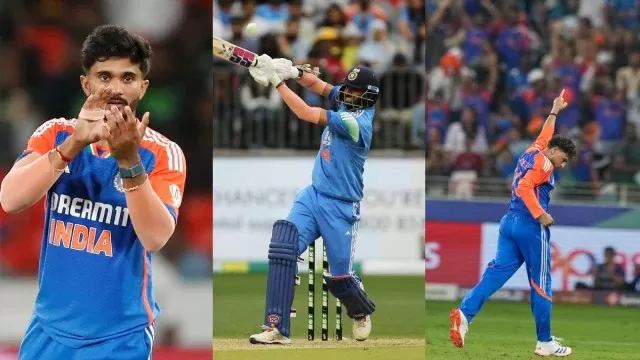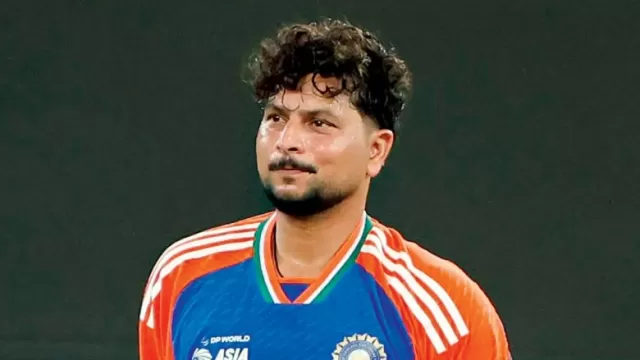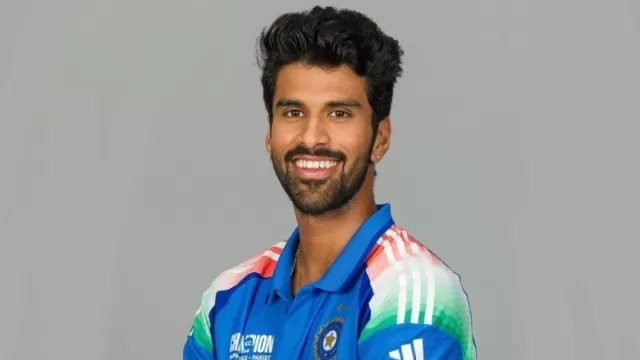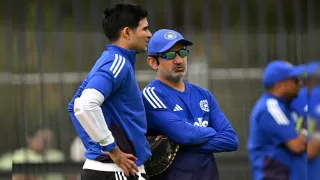Why India Chose Nitish Reddy & Sundar Over Kuldeep Yadav?

India’s ODI team selection has sparked a debate among cricket fans and experts alike. The big question on everyone’s mind is why Kuldeep Yadav, one of India’s premier wrist-spinners, is being overlooked in favor of players like Nitish Kumar Reddy and Washington Sundar. While Kuldeep’s skills as a wicket-taking spinner are well known, the current strategy under captain Gautam Gambhir seems to focus heavily on all-rounders who can provide depth in both batting and bowling.
In recent matches in Australia, the Indian management opted for a combination that prioritizes batting resilience and versatile spin options. This approach reflects a broader vision targeting the 2027 World Cup, where conditions in South Africa are expected to mirror those found in Australia, with bounce and seam movement playing a crucial role. It’s a move designed to give India more flexibility, even if it means sidelining specialist bowlers like Kuldeep in the short term.
For selectors, the emphasis is not just on winning the immediate series but also on grooming players for the future. Nitish Kumar Reddy and Washington Sundar offer attributes that align with long-term plans: batting depth, spin versatility, and the ability to adapt in high-pressure overseas conditions. The Indian team is clearly thinking beyond just the current series, aiming to build a squad that balances experience with multi-dimensional players who can handle varied match situations.
India’s Strategic Shift: From Wrist-Spin to Batting Depth
The decision to include Nitish Reddy and Washington Sundar over Kuldeep Yadav is part of a larger strategic framework. Historically, India has relied on wrist spinners for middle-over breakthroughs, but modern ODI cricket demands more than just wickets. Teams increasingly focus on batting depth, fielding excellence, and the ability to rotate players efficiently across formats.
In Australia, this approach was evident as the team opted for two finger spinners rather than two wrist spinners. While it may appear to be a step back in traditional spin strategy, it is a calculated decision to strengthen the batting order. All-rounders like Sundar can contribute crucial runs in the lower-middle order, giving India more options during tight chases.
The emphasis on batting depth also aligns with the philosophy of building a well-rounded squad that can endure the challenges of overseas pitches. By prioritizing versatile players over specialist spinners, India aims to create a balanced XI that can both defend totals and accelerate during batting-friendly phases.
Kuldeep Yadav’s Contrasting Overseas Record

Kuldeep Yadav’s statistics in different conditions help explain the selectors’ dilemma. In South Africa, he boasts an impressive average of 15.94 in eight matches, taking 18 wickets. Conversely, in Australia, he has managed only three wickets from three ODIs at a much higher average of 59. While the sample size is small, the numbers raise questions about his effectiveness in bouncier, faster conditions.
Despite his proven skill in domestic and IPL cricket, Kuldeep’s overseas form has been inconsistent. This has forced selectors to weigh the risk of including a specialist bowler whose impact may vary depending on the conditions. For India, the decision appears to be one of calculated pragmatism — relying on spinners who can bowl economically while also offering batting contributions.
Veteran Ashwin highlighted the dilemma on his YouTube channel, noting that while the team wants batting depth, specialist bowlers like Kuldeep should not be overlooked. “If you want to build your game around batting depth, then batters must take responsibility for scoring. Play your best bowlers; don’t pick a team just to extend your batting,” he explained, echoing a sentiment shared by many cricket purists.
Nitish Kumar Reddy: Grooming for the Future

Nitish Kumar Reddy’s inclusion is less about immediate impact and more about long-term planning. With the 2027 World Cup and T20 World Cup just months away, India’s management is grooming him to be a reliable all-round option. Unlike Hardik Pandya, whose role limits bowling opportunities in ODIs, Nitish has the chance to develop his skills while contributing with the bat.
Selectors aim to provide him with sufficient overs in international conditions so that by the time major tournaments arrive, he has both experience and confidence. IPL performances have shown that Nitish can steady innings under pressure, making him a valuable asset for India’s middle-order stability. The strategic focus is on nurturing talent that can handle overseas challenges without compromising the team’s balance.
This approach is also a safeguard against over-reliance on a few star players. By investing in Nitish now, India hopes to avoid situations where limited options create vulnerabilities during key World Cup matches. It’s a forward-thinking policy aimed at squad depth and long-term competitiveness.
Washington Sundar: Batting Depth and Spin Control

Washington Sundar’s selection ahead of Kuldeep signals India’s preference for batting depth over wrist-spin aggression. Sundar’s finger-spin offers control in middle overs, while his batting ensures lower-order contributions. In high-scoring games, such versatility is often more valuable than taking occasional wickets.
Gautam Gambhir’s strategy in ODIs mirrors his IPL philosophy: prioritize batting strength and allow bowlers to support the chase. Sundar fits perfectly into this template, capable of playing stabilizing innings or accelerating when required. He can also bowl in the first powerplay or middle overs, giving Gambhir tactical flexibility during matches.
While critics argue that India is sacrificing attacking options, Sundar’s dual-role capability provides a safer, more consistent approach. His presence allows the team to handle pressure situations effectively, both with the bat and ball.
Axar Patel: All-Round Balance Over Traditional Roles

Another key factor affecting Kuldeep’s chances is Axar Patel’s inclusion over Ravindra Jadeja. Axar is a left-handed batsman and a reliable bowler, making him ideal for Gambhir’s left-right batting strategy. His evolving batting skills, combined with proven bowling and fielding, make him a multi-dimensional asset for ODIs.
Axar’s role demonstrates the selectors’ preference for players who can solve multiple problems simultaneously. While Kuldeep offers attacking spin, the team management values balance and flexibility, particularly in overseas conditions where pitch behavior may not favor wrist spinners. This philosophy underscores why India is moving towards all-rounders and finger spinners in the current ODI setup.
By creating a team where players contribute in more than one discipline, India hopes to minimize weaknesses and maximize adaptability. For Kuldeep, this means competing for limited spots where the focus is increasingly on overall versatility rather than specialist skills alone.
Conclusion: A Calculated Strategy for World Cup Success
In summary, India’s preference for Nitish Kumar Reddy and Washington Sundar over Kuldeep Yadav in ODIs is a strategic decision rooted in long-term planning. With the 2027 World Cup in South Africa in mind, selectors are prioritizing players who offer both batting depth and spin options, even if it means sidelining an experienced wrist-spinner.
The move highlights a broader trend in modern ODI cricket: flexibility, versatility, and adaptability often take precedence over specialization. While Kuldeep remains a valuable player, India’s management believes that grooming multi-dimensional talents now will ensure a stronger, more resilient squad for major tournaments in the years to come.
Ultimately, the strategy reflects a balance between immediate match requirements and long-term objectives. By investing in Nitish, Sundar, and Axar, India is betting on a combination of youth, skill, and tactical depth — a plan designed to keep the team competitive on challenging overseas tours while preparing for the global stage.
Also Read: Nihal Sarin Blames Kramnik: “He’s Literally Taken a Life”
Disclaimer
Possible11 is a sports news platform that provides live scores, player statistics, and tournament updates for informational and educational purposes only. We comply with the Online Gaming Bill, 2025 (India) and do not promote or engage with fantasy sports, betting, or real-money gaming platforms. All content is intended solely to enhance the sports experience. Possible11 is not affiliated with any fantasy or gambling applications and is not responsible for any financial gains or losses incurred on external platforms.












Give Your Feedback